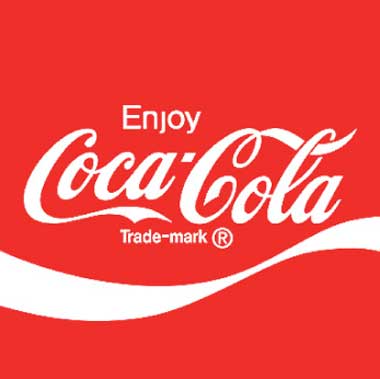Saturday Nov 22, 2025
Saturday Nov 22, 2025
Tuesday, 26 April 2016 00:08 - - {{hitsCtrl.values.hits}}
Ruchi Gunewardene, Managing Director of Brand Finance Lanka, sets out a compelling case for reforming this institution in order for Sri Lankan businesses to be globally competitive

In this fast changing business world, value creation is changing from the conventional bricks and mortar to intangibles. There is a paradigm shift in the way business value is now being created.
Much of the intangible value is captured in the brand, so, owning, measuring and tracking its performance becomes a key driver in the value creation process.
Unless businesses are involved in commodity trading, companies in all other economic sectors – whether small or large rely on brands they own when they commercialise their goods and services. The trademark is the legal embodiment of the brand, and is by far the most widely used form of registered intellectual property (IP).
The issue for Sri Lankan businesses however, is, the outmoded trademark registration process.
It is normal for Sri Lankan companies to have to wait nearly 10 years to register even a simple trademark. In this fast moving global village that we live in, how are we ever going to build strong brands that can bring wealth to Sri Lanka if we don’t have the right to actively transact this important intangible value creating asset?
The registration of a trademark is usually the most important vehicle for securing exclusive rights to a brand. The typical tasks of trademark offices consist of examining the applications they receive for registration, publishing those applications, considering possible third party oppositions against them, registering successful applications, and maintaining the register as the official record of trademark ownership.
Until a trademark is registered in its home market it cannot file for an international WIPO (World Intellectual Property Organization) trademark to build a global brand.
No wonder there is no incentive for Sri Lankan entrepreneurs to go global.
The new world order
For companies, brands are valuable strategic assets and a source of competitive advantage. Accordingly, companies look for protecting this most important asset quickly and efficiently as they focus on the market challenges to grow their business.
Brand Finance has been tracking the brand values of thousands of the world’s top brands for more than ten years. The most striking finding is that an investment strategy based on the most highly branded companies (those where brand value makes up a particularly high proportion of overall enterprise value) would have led to a return almost double that of the average for the S&P 500 as a whole.
Between 2007 and 2015, the average return across the S&P was 49%. However by using Brand Finance’s data, an active investor could have generated a return of up to 97%. Investing in companies with a brand value to enterprise value (BV/EV) ratio of greater than 30% would have generated a return of 94%. Investing exclusively in the 10 companies with the highest BV/EV ratios would have resulted in a 96% return.
The total value of Sri Lanka’s most valuable 100 brands stands at Rs. 426 billion in the just released 2016 Brand Finance most valuable brands index. This constitutes 28% of the total enterprise value of those businesses. Thus, clearly, there has to be an efficient mechanism of protecting this extremely valuable intangible asset.
Whilst playing a vital role in value creation, according to WIPO, in most economies, the number of trademark filings correlates with an upward movement in the business cycle in that economy.
Trademark filings can be expected to increase because economic growth has come along with the creation of new companies and the introduction of new goods and services.
The globalisation of economic activity has prompted trademark holders to take their brands to more countries. In WIPO’s world intellectual property report, they note that this includes trademark holders from low and middle income countries, who account for an increasing proportion of non-resident filings throughout the world.
It states that the emergence of the Internet has spurred trademark filings and spearheaded the creation of new firms, business models and services. The digital marketplace has also increased the importance of brand reputation, as consumers engage in transactions via the internet.
All of these shifts have resulted in increasing competitiveness which in turn has prompted the rapidly growing use of trademarks across the world as companies seek protection in what is essentially a core business driver.
As competition increases in many sectors, rather than advertising and promotions, companies now resort to creating brand experiences for their customers as this enables them to differentiate much more efficiently. This differentiation could include being environmentally more responsible amongst many other attributes, such as safety, reliability, efficiency, friendly etc.
Branding is no longer the purview of companies alone. Increasingly, individuals, civil society organisations, as well as government, intergovernmental organisations, cities and even nations are adopting an active approach to branding.
There are also markets for brands in the context of being traded or exchanged for mutually beneficial purposes which makes it so vital that there is a quick and speedy registration process. Similar to patents, brands are licensed, bought and sold at the national and international levels. Markets for brands allow companies to diversify their business and to expand into additional product categories. In addition, they enable companies to access competences outside their own core strategic assets, and to generate new revenues without substantial investments into building or acquiring additional knowhow or manufacturing capability.
Franchising is an even bigger market – with a high level of activity in almost all countries, all of which establishes the need to have properly registered trademarks to carry on these businesses.
The new design of the trademark registration process
There are various considerations that go into the setting up of the trademark registration process. In performing its tasks, WIPO suggests the trademark office needs to promote accessibility to the trademark system – especially for smaller, more resource-constrained applicants. In addition, they need to ensure transparency and legal certainty, while balancing the interests of right holders and those of third parties.
WIPO also points to an important question in relation to what extent the registration of a trademark application should be conditional on the applicant actually using the trademark – notably, by selling products bearing the trademark in the marketplace. Some countries do not require any use of a trademark. Other offices – such as the European Union’s Office for Harmonization in the Internal Market (OHIM) – require such use.
Whatever the process maybe, it is time that Sri Lanka reviewed its trademark registration process, updated it, and make it a smooth and speedy process, thereby releasing a key constraint in being globally competitive.
Footnotes
WIPO’s 2013 World Intellectual Property Report on Brands – reputation and image in the global market place, was the reference used in compiling this article.
(Ruchi Gunewardene is a brand consultant who can be contacted on [email protected].)